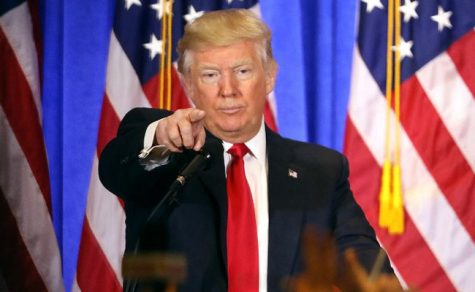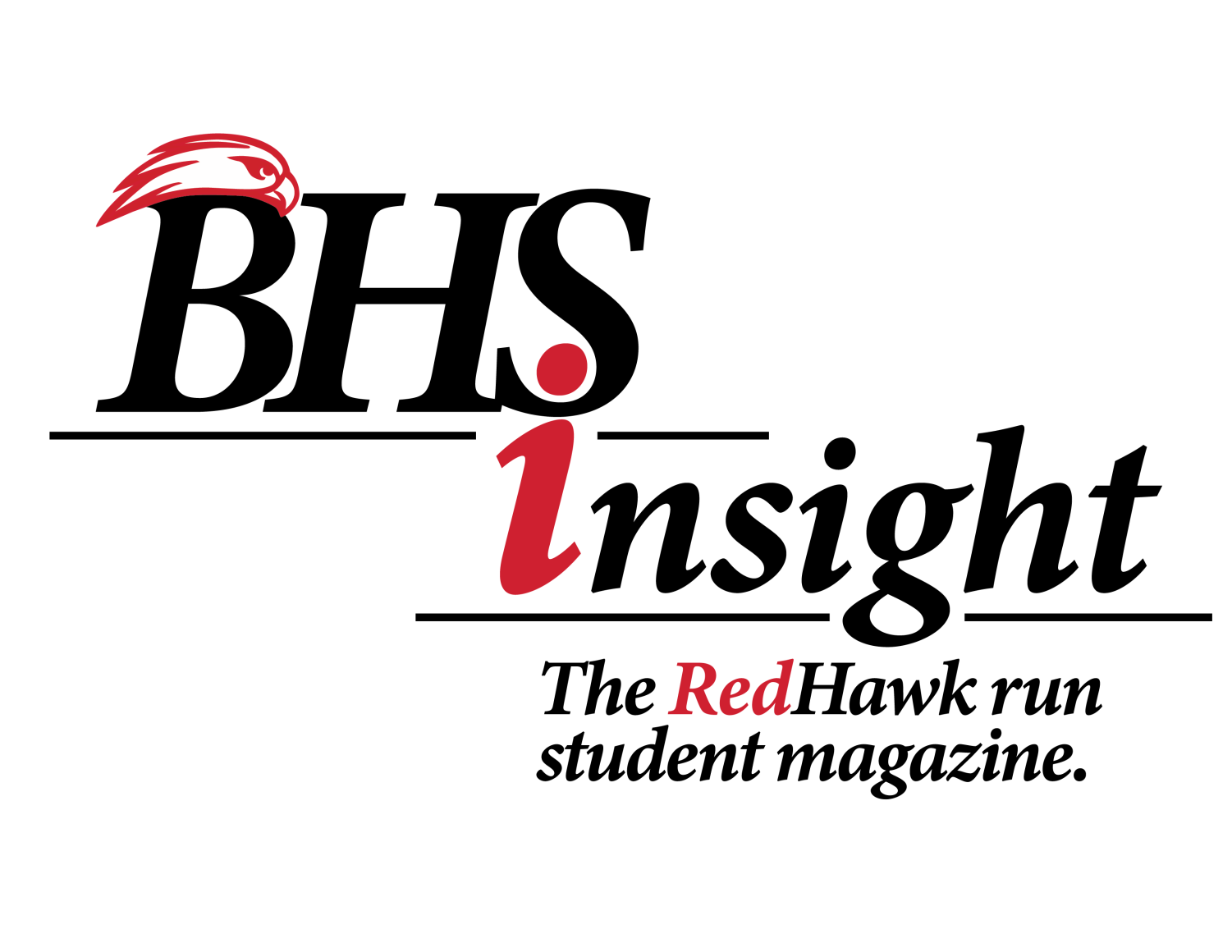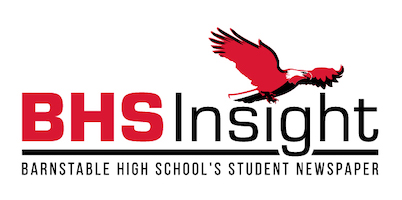Donald Trump Takes to Twitter: Names BHS Insight Fake News
Not really.
March 1, 2017
Reading articles in newspapers or magazines has become a thing of the past; skimming Facebook or Twitter while you’re waiting for your daily Dunkins appeals much more to the social media crowd. But with the power of social media at our fingertips there is even more of a responsibility to make sure we are sharing valid information: because nothing snowballs faster these days than the recently-developing phenomenon known as fake news. Legitimate sounding domains such as WorldPoliticus.com, USConservativeToday.com, and USADailyPolitics.com could fool even the savviest of social media consumers.
Some instances of fake news are obvious to those who practice common sense. “Donald Trump Says Republicans Are The Dumbest Group of Voters” “FBI Agent Suspect in Hillary Mail Leaks Found Dead in Apparent Murder Suicide” and “Obama Signs Executive Order Banning the Pledge of Allegiance in Schools Nationwide” are just a few of the fake news headlines that seem to be a dime-a-dozen on everyone’s feed. It’s hard not to roll your eyes: who in their right mind would believe these laughable headlines, let alone the articles that follow?

The day after the election in November, Twitter user @erictucker posted pictures of buses in Austin, TX with the caption “Anti-Trump protesters in Austin today are not as organic as they seem. Here are the busses they came in. #fakeprotests #trump2016 #austin” claiming that anti-Trump protesters had been paid for and were being shuttled around in the busses he had seen. Eric Tucker’s tweet was shared at least 16,000 times on Twitter and more than 350,000 times on Facebook. The problem was, the buses weren’t full of anti-Trump protesters– they were hired by Tableau Software, who used the buses to transport people to their conference in Austin that day.
The fact that Tucker got it wrong isn’t the point: the fact that his misinformation spread so quickly and was believed by so many epitomizes the root of the problem. “I did think in the back of my mind there could be other explanations, but it just didn’t seem plausible,” Tucker later said in an interview, noting that he had posted as a “private citizen who had a tiny Twitter following.” He continued, “I’m also a very busy businessman and I don’t have time to fact-check everything that I put out there, especially when I don’t think it’s going out there for wide consumption.”
This in itself is the difficulty with fake news–many who create a fake news story or help one to go viral by sharing it online usually don’t have any nefarious secret agenda or intent to mislead–they are just being lazy readers. The recent rash of fake news stories have revealed an unpleasant aspect of the average American: we are sloppy news consumers. We’re not willfully trying to be sloppy consumers, but rather because of the overload of information we receive daily from our social media, and the fast-paced lives of the modern American, it’s too much work or takes too much time to look into sources and fact-check everything. Fake news has proven that as a society, we just don’t care enough to look past the headlines. The sensationalized headlines boasting bold accusations like “Hillary SOLD weapons to ISIS” or “Pope Francis SHOCKS the World; Endorses Donald Trump For President” are simply more engaging than anything reputable news sources are putting out. And many times, if the headline matches our own opinions, it will seem more plausible and we are more likely to share it.

Facebook founder and CEO Mark Zuckerberg came under fire recently for not taking action against the multitude of fake news stories clogging up everyone’s timeline. Facebook uses a complex algorithm that decides what posts to show its users based on that user’s likes, what pages that user spends the most time on, and what articles are getting the most traffic. Because of this, many people will only see news articles that agree with their own opinions; and if a fake news story gets enough traction, they will see that too. This creates a vicious cycle of people wrapping themselves in the bubble of their own perspective, polarizing them from those whose opinions differ. Add in an explosive and aggressive election like the 2016 presidential race, and you have the perfect situation for misinformation to run wild.
And although it may seem like all fake news has caused is heated Twitter fights over buses, the consequences of viral misinformation are very real and very dangerous. “Pizzagate” refers to the now debunked theory that Hillary Clinton was involved in a child prostitution ring operating out of several pizza restaurants across the country. It originated when WikiLeaks released emails from the Chairman of Clinton’s presidential campaign John Podesta’s email account. Conspiracy theorists worldwide claimed that he was using a code to disguise the ring of child prostitution of which Clinton was the head. As insane as these accusations seem, many people believed them to be true. Comet Ping-Pong, the D.C. pizza restaurant believed to be the hub of the ring, reported hundreds of phone calls ranging from harassment to death threats from people who actually believed they were running a child prostitution ring from their restaurant. On December 4, 2016, Edgar Maddison Welch, a 28-year-old Salisbury, North Carolina man, went to Comet Ping-Pong pizza with the intent to self-investigate the “Pizzagate” claims, firing three shots from an AR-15-style rifle. Luckily no one was injured, but the fact that a fake news story led to a man literally firing his rifle inside a pizza restaurant should raise red flags in every American’s mind. The President is also raising flags on the blurred lines between real and fake news. In the past, it was a ritual for families to gather around the radio, then television, to hear the nightly news from the big three: ABC, NBC, and CNN. From Roosevelt’s fireside chats to Walter Cronkite’s news bulletin of JFK’s death, the American public has always been able to turn to tried and true sources for their news. But now with our own President’s “fireside tweets” decrying news outlets such as CNN and the New York Times as “FAKE NEWS” (exact quote and capitalization from Trump’s twitter) it’s become unclear as to what the American public can and cannot trust.

But it’s hard to trust the government when Kellyanne Conway, senior advisor to President Trump, in an interview with CNN’s Chuck Todd used the term “alternative facts” to describe press secretary Sean Spicer’s misinformed statements about President Trump’s inauguration size. Spicer condemned the media for “deliberately false reporting” on the crowd size, stating that it was “the largest audience to ever witness an inauguration, period.” Although there isn’t a concrete number for Trump’s inauguration, (as the National Parks Services stopped crowd estimating in the 1990s,) Spicer’s comments were not correct. Call it what you will: a lie, a falsehood, an inaccuracy, an alternative fact; it just isn’t true. Each of these words has a different connotation, however–saying the press secretary for the President of t
It does matter. Since we are now living in this new world of fake news it has become harder and harder to discern what is and isn’t the truth. A lot of times, common sense is all you need to spot a fake news story or a lie. Other times, you need to go back to the primary source to fact check, or read as many sources as you can to avoid getting biased facts. Above all: don’t let yourself be a lazy reader and news consumer. It is so easy to read a headline, read a few sentences in the article and share it to your Facebook. But there is now an even greater responsibility to make sure the information we are able to share worldwide in a millisecond is valid, because we are all a part of the mainstream media whether we like it or not, and something as innocent as clicking “Share” could lead to very real, very dangerous consequences.

